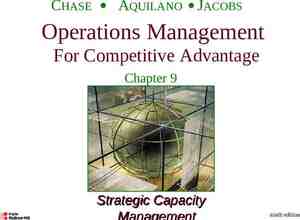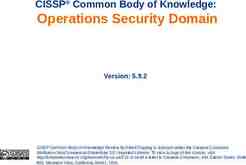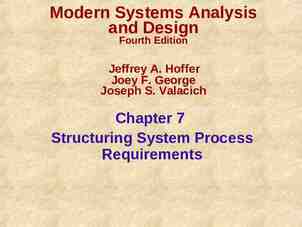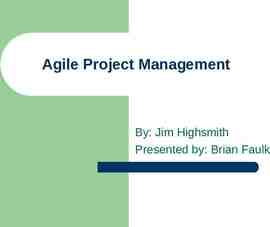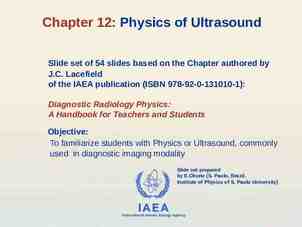NSW Department of Education Creative arts Learning Sequence – Stage
25 Slides3.00 MB

NSW Department of Education Creative arts Learning Sequence – Stage 3 Student activity resources

NSW Department of Education Activity 1 Student resources

NSW Department of Education Learn a rap Learn to chant 'Rubbish Rap' 1. Learn to sing the chant ‘Rubbish Rap’ from Vocal Ease MORE (Module 1). 2. Use lyrics on the next slide as a guide. 3. Pause and play to assist you to learn the song. 4. Practice keeping the beat with the music . 3

NSW Department of Education Chant a rap Learn to chant 'Rubbish Rap' (supporting lyrics) 'Rubbish Rap' By Tracy and Paul Burjan with Zain Ousmand Chorus Ooo, ahhh, Rubbish Rap, Take that wrap and toss that scrap, Flip that lid right on the bin, Check, recycle, throw it in. Be proactive, make a change, Rethink your ways, it’s not so strange. Ooo, Ahhh, Rubbish Rap, Listen to me, now let’s recap, Verse 2 Chorus (twice) Plastic bags aren't so cool, Ooo, ahhh, Rubbish Rap, Take your own bag as a rule. Take that wrap and toss that scrap, Think of the future down the track, Flip that lid right on the bin, You’ll get the knack so don’t be slack. Check, recycle, throw it in. Crunchy plastics can be reused, Be proactive and make a change, It’s not so hard, don’t look confused. Rethink your ways, it’s not so strange. Think before you throw it in, Ooo, ahhh, Rubbish Rap, Reuse, recycle that’s a win! It’s not a load of rubbish. It’s not a load of rubbish. Verse 1 Crack down, back up, Reuse that coffee cup. Cups up, cups down, got one at home. It’s so easy to bring your own. Change, exchange don’t throw it out, Reuse those clothes without a doubt. Don’t toss those threads, sew them again, Cut them up and start a trend. 4 It’s not a load of rubbish. Verse 3 Save our planet from all that waste, Use your bins, at home base Red for rubbish, yellow for paper. Green to mulch up all that nature. Composting can be so cool, Start a compost at your school. Watch the worms as they are fed, Chuck it on the garden bed. It’s not a load of rubbish. Listen to me, and, that’s that!

NSW Department of Education Think about the rap Reflection on these questions What is the story this rap tells? Why is it important? What is the argument behind the text? Does rapping help you to understand both the narrative and the meaning of the argument it is presenting about waste? Discuss the issues raised through this rap with peers and your household. What part are you doing to reduce waste in the environment? Practice different ways of performing this rap including using different vocal tone colours (or sounds) to make the voice more interesting and to match the meaning of each verse and chorus. Discuss other examples of rap music which tell a story. Family members, caregivers and friends may be aware of raps, chants or even poems that they know which tell a story or create a narrative. What role does the music have in supporting this narrative? If any are known, add these raps or poems to a list in the class digital platform. Make sure that they are appropriate and do not use language that your peers may find offensive. Also include a sentence to describe how the music helps to tell the story. 5

NSW Department of Education Think about the song Reflection questions Practice the shortened version of ‘Rubbish Rap’. The shortened lyrics are on the next slide. What do you notice about the structure of this shortened version? What is different to the other, longer version? Practice keeping the beat with this shortened version of ‘Rubbish Rap’. How many beats do you notice are in each line of the chorus and then the verse? Look at the guide after the shortened lyrics if you're not sure. The beats are marked in the brackets in bold. 6

NSW Department of Education Chant a shortened rap Shortened chant 'Rubbish Rap' (supporting lyrics) 'Rubbish Rap' By Tracy and Paul Burjan with Zain Ousmand Chorus Chorus Ooo, ahhh, Rubbish Rap, Ooo, ahhh, Rubbish Rap, Take that wrap and toss that scrap, Take that wrap and toss that scrap, Flip that lid right on the bin, Flip that lid right on the bin, Check, recycle, throw it in. Be proactive, make a change, Rethink your ways, it’s not so strange. Ooo, Ahhh, Rubbish Rap, Listen to me, now let’s recap, It’s not a load of rubbish. Verse 1 Crack down, back up, Reuse that coffee cup. Cups up, cups down, got one at home. It’s so easy to bring your own. Change, exchange don’t throw it out, Reuse those clothes without a doubt. Don’t toss those threads, sew them again, Cut them up and start a trend. 7 It’s not a load of rubbish. Check, recycle, throw it in. Be proactive, make a change, Rethink your ways, it’s not so strange. Ooo, Ahhh, Rubbish Rap, Listen to me, now let’s recap,

NSW Department of Education Keep the beat in the rap Keep the beat to the shortened version of 'Rubbish Rap' 'Rubbish Rap' By Tracy and Paul Burjan with Zain Ousmand Chorus Line 1 - (1) Ooo, (2) ahhh, (3) Rubbish (4) Rap, Line 2 - (1) Take that (2) wrap and (3) toss that (4) scrap, Line 1 - Crack (1) down, (2) (rest), back (3) up, (4) (rest) Line 2 - Re- (1) use that (2) coffee (3) cup (4) (rest). Line 3 - Cups (1) up, cups (2) down, got (3) one at (4) home. Line 3 - (1) Flip that (2) lid right (3) on the (4) bin, Line 4 - (1) It’s so (2) easy to (3) bring your (4) own. Line 4 - (1) Check, re- (2) cycle, (3) throw it (4) in. Line 5 - (1) Change, ex- (2) change don’t (3) throw it (4) out, Line 5 - (1) Be pro- (2) active, (3) make a (4) change, Line 6 - (1) Reuse those (2) clothes with- (3) out a (4) doubt. Line 6 - (1) Rethink your (2) ways, it’s (3) not so (4) Line 7 - Don’t (1) toss those (2) threads, sew (3) them a- (4) gain, strange. Line 7 - (1) Ooo, (2) Ahhh, (3) Rubbish (4) Rap, Line 8 - (1) Listen to (2) me, now (3) let’s re- (4) cap, It’s not a load of rubbish. (tag line – not a part of the chorus and can be said in whatever way you would like) 8 Verse 1 Line 8 - (1) Cut them (2) up and (3) start a (4) trend. It’s not a load of rubbish. (tag line – not a part of the chorus and can be said in whatever way you would like)

NSW Department of Education Make a rap Make your own rap using the shortened backing track 1. How many beats are in each line? How many lines are there in the chorus and the verse? 2. Think of an issue that is concerning you, or a story you think needs to be told. 3. Write this as a rap using the format above of 8 lines per verse and chorus with 4 beats in each line. You will need to write both the verse and the chorus. 4. You will find a table to help you plan on the next slide. 9

NSW Department of Education Make a rap Make your own rap using the shortened backing track Chorus Beat Number 1 2 3 4 Line 1 Line 2 Line 3 Line 4 Line 5 Line 6 Line 7 Line 8 Tag line: 10

NSW Department of Education Make a rap Make a rap text using the right structure, beats and the shortened backing track Verse Beat Number Line 1 Line 2 Line 3 Line 4 Line 5 Line 6 Line 7 Line 8 11 1 2 3 4

NSW Department of Education Make a rap Make your own rap using the shortened backing track 1. Use the shortened backing track to practice your rap. 2. You may wish to create your own backing using GarageBand or with a household member keeping the beat or even beat boxing! 3. Upload your lyrics to the class digital platform. 4. You might also like to record your rap and upload that as well. This is an optional extra. Have fun! 5. Extension: You might enjoy watching the video clip of ‘Rubbish Rap' created by the students and teachers at Gymea Bay Public School. There are instructions on how to develop this yourself within the Vocal Ease MORE (Module 1) resource if you wish to try this yourself. 12

NSW Department of Education Activity 2 Student resources

NSW Department of Education Play some music Write about its genre and style Listen to Tommy Dorsey’s ‘Boogie Woogie’ then answer these questions in your digital platform: Describe the style of the music and what instruments can be heard. Is this a recent composition? How do we know? How does the music make us feel? What does the composer do to make us feel this way? Think about the dynamics (volume), the tempo (speed), the instruments, and the rhythms (they are in a jazz style known as swung) in your answer. Do we create a story or an image in our heads when we listen to this music? Write what your image or story is when you listen to it. 14

NSW Department of Education Reflecting on a busy city Think and talk about how an artwork can be a city Examine this artwork as created by Piet Mondrian called the ‘Broadway Boogie Woogie’. Think about these questions and discuss them with your peers or household: Where is Broadway? Locate it on a map and read a little bit about it. Ask yourself what does it usually look like? Who goes there and what are they doing? What does it smell like? Is it crowded or peaceful? Watch this short 3D animation of an interpretation of the narrative of this artwork. Does it add to or detract from the narrative of the artwork? Discuss how Mondrian’s artwork ‘Broadway Boogie Woogie’ evokes the grid pattern of New York City streets, blinking lights, traffic, the city hustle and so on. Can you see that story of New York as you look at Mondrian's artwork? 15

NSW Department of Education Reflecting on music and art Write about it the similarities between an artwork and a music genre The title of Mondrian's artwork relates to the jazz style known as the boogie woogie. The features of boogie woogie music are: a jazzy sound a repetitive shuffling rhythm repeated patterns pops of sound from brass instruments. How does this music style match Mondrian's painting? Think about the feeling of motion, repetition, patterns and maybe what the larger squares of colour could be? How does the painting match the music of the boogie woogie and the feel of Broadway? When comparing the artwork and the music, use this video about Mondrian and Dorsey to get some ideas. What similarities are now noticeable? Can you think of any others? Comment on what similarities you notice in the class online digital platform. 16

NSW Department of Education Making connections between artforms Analyse music and art relationships Look at more Mondrian art in works such as ‘Victory Boogie Woogie’, ‘Composition No.10’ and ‘Composition II in Red, Blue, and Yellow’. How does Mondrian’s use colour, shape and line? Analyse his use of shape, form and pattern. What is his style? Discuss with your family and friends. Listen to a sample of a piece of music about the city of Detroit in America by Tod Machover called the 'Symphony In D' (particularly around the 4-minute mark). This piece was inspired by more than 15,000 sounds collected from the city. Discuss with your household or peers about what you can hear in a sample of the piece. 17

NSW Department of Education Create an artwork Describe the narrative of your artwork and share it with the class Use the idea behind this piece and the techniques of Mondrian to inspire you to create your own artwork connected to music. You might create your own style or use Mondrian's if you'd prefer. Maintain a focus on the narrative you are telling through your artwork. This may be about the noises of your own street, the city or perhaps somewhere you have visited or seen in a movie. Photograph your artwork and add it to the class digital platform with an artist intent statement. This should include the title and a 1-2 sentence summary of your artwork. 18

NSW Department of Education Activity 3 Student resources

NSW Department of Education Watch a short film Watch, explore and share your ideas Watch the short, animated film ‘Alike’. Students should consider what the film is about by answering these questions in the class digital platform: 1. In 2-3 sentences summarise the narrative of this film. 2. What role does the music and then non-music (silence) have in telling this story? 3. How does colour effect your understanding of the story? 4. What is the theme of the story? 20

NSW Department of Education Act it out Be dramatic! In a comfortable place, pose as some of the chracters from 'Alike' - either the father, the son, the teacher, the boss, or the musician. Take a photo (either a selfie or taken by someone else) to upload to the digital platform. Label the character being portrayed and write a sentence that describes their mood, character or demeaner (manner). Next, make the shape of an object from the film such as the briefcase, violin, tree, chair, desk, stop sign, bus. Again, take a photo (either a selfie or taken by someone else) to upload to the digital platform. Label the object being portrayed. Create a ‘postcard’ from the story. This should be around one of the most important moments in the film. For example, the son and dad going to work or school, the son and dad watching the musician, the son at school, or the dad at work. This work can be done alone or with some other members of the household using this supporting video to assist. Take a photo of the finished product and post to the class digital platform clearly labelling the moment from the story that you are portraying. 21

NSW Department of Education Watch and play Watch some mime and then create your own Watch and reflect on mime artists such as Marcel Marceau or Rowan Atkinson through watching their short clips. Much of their movement is exaggerated in order to reinforce the narrative. In ‘Alike’, the miming used is called ‘occupation mime’ which focusses on miming everyday occurrences. Practice miming some everyday occurrences in your household and perform these for your household. For example, picking a flower, throwing a ball, or answering a phone call (with no noise though). Play a game of Charades with your household. Remember this is a miming activity and can be great fun for everyone! 22

NSW Department of Education Create and record Make a silent film Begin the process of making a silent film by thinking of a story you could tell about your daily life without using words. Think about these things: The story should be able to be filmed in one shot with no cuts (so no editing will be needed). The film should be about one simple activity like playing a game of handball, walking the dog or putting out the bin and should be no more than a minute long. The focus should be on the action, movement, body language and facial expressions. Record your silent film by placing a device on a table or stand or by asking another household member to film it. Focus on your ability to convey the narrative through mime. Upload your silent film to the class digital platform. Include a title for their film either as a card at the start of their product or in the digital platform. 23

NSW Department of Education Think about it What have you learnt about narrative and drama? Watch some of your peers' silent films where possible. Reflect on what further information has been gained about the narrative of dramatic interpretations and discussions with your household or peers. Is a silent film a strong way to tell a narrative? Is speech necessary to tell a story well? Answer this question in the class digital platform. Why do you think that? Extension: If you wish to have some music playing in your film, why not have some playing in the background to add to the story. You might also want to upload your silent film through iMovie and add music in the background. If you want to find out more about how to do this visit Act Ease ‘Digital drama’ which shows you how to do this. 24

NSW Department of Education

